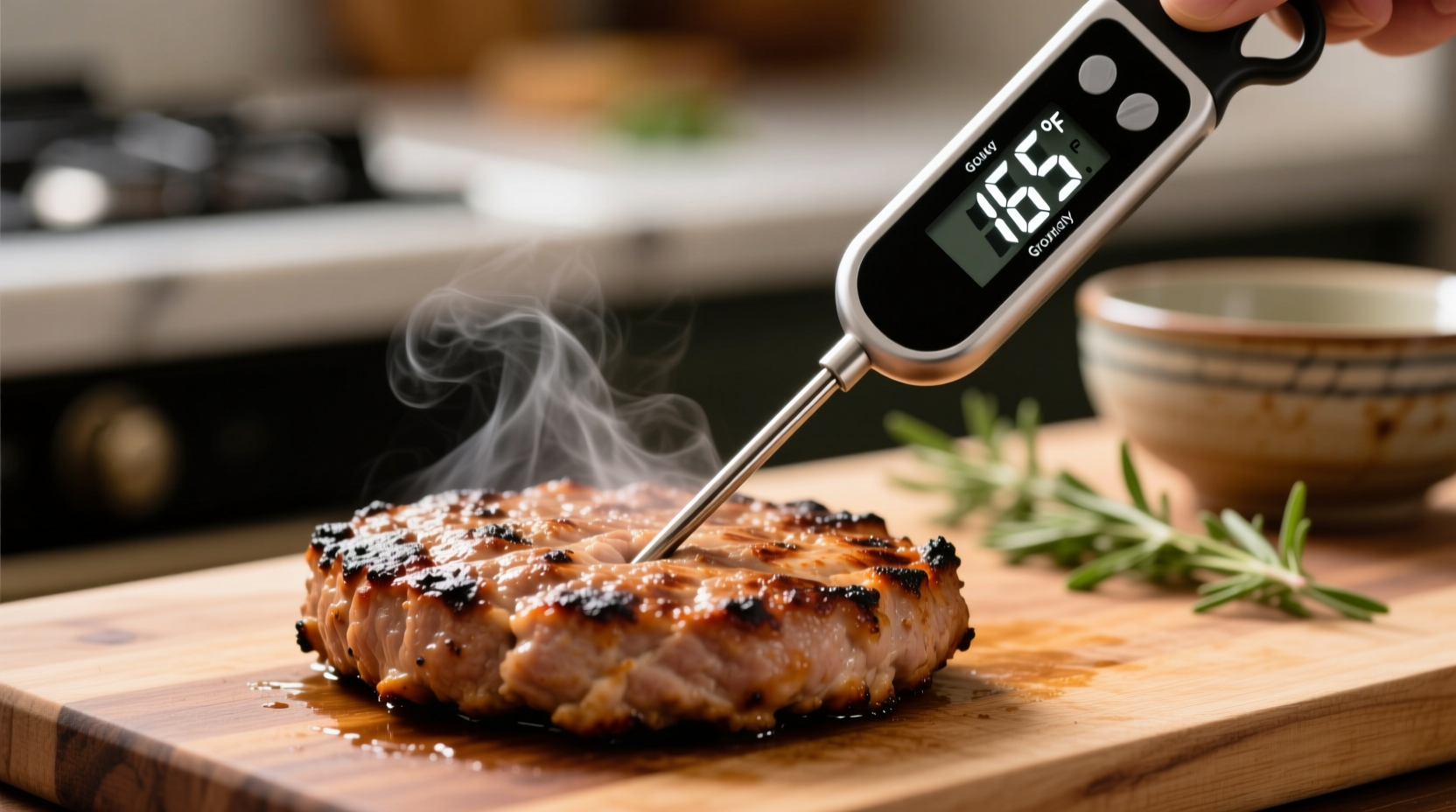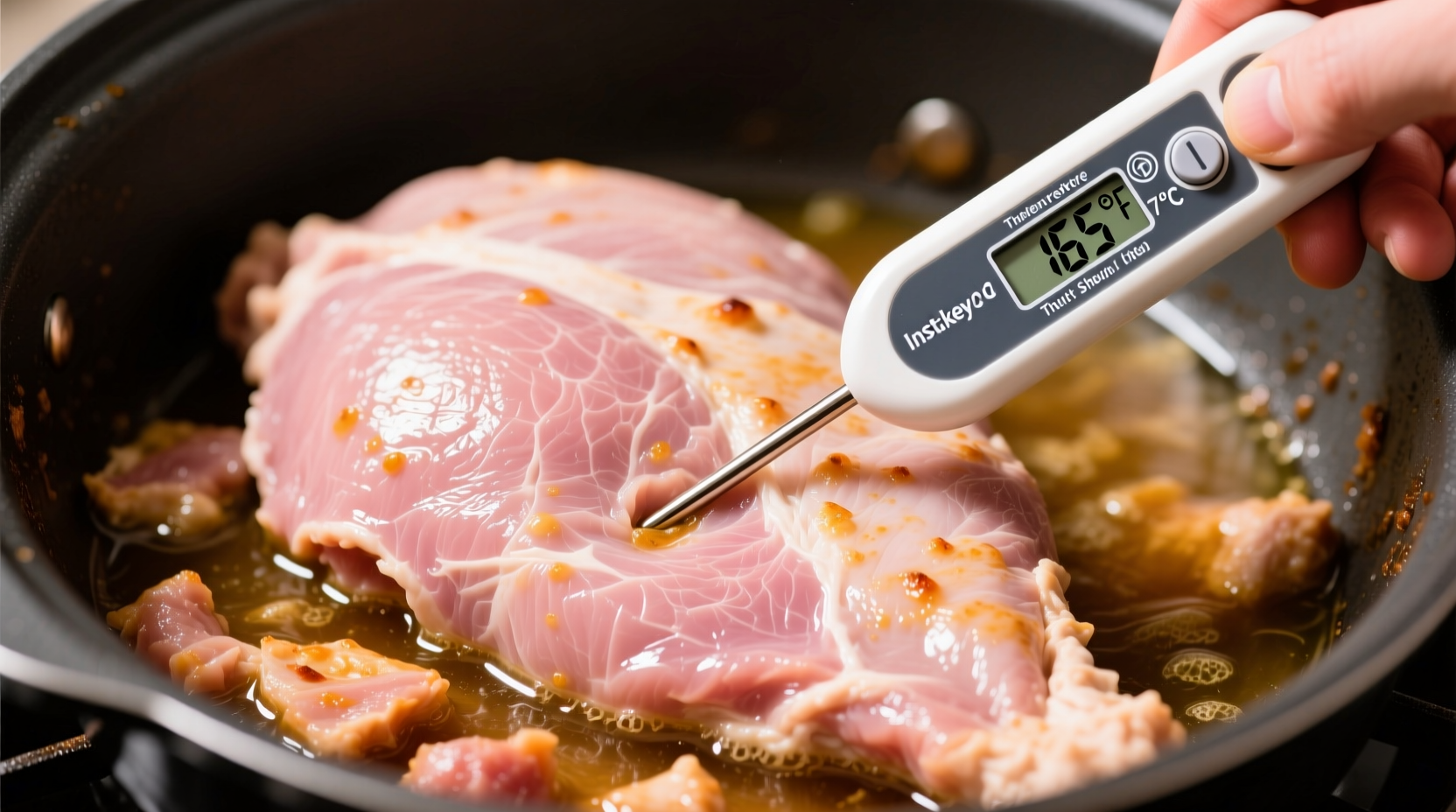Why 165°F Is Non-Negotiable for Ground Turkey
Unlike whole turkey cuts, ground turkey requires higher cooking temperatures due to its processing method. When turkey is ground, surface bacteria get distributed throughout the meat. The USDA's Food Safety and Inspection Service (FSIS) confirms that 165°F is the minimum temperature needed to eliminate pathogens that cause foodborne illness.
"The danger zone for poultry is between 40°F and 140°F," explains food safety expert Dr. Mindy Brashears, former USDA Deputy Under Secretary for Food Safety. "At 165°F, we achieve a 7.0 log10 reduction in Salmonella, which means we've destroyed 99.99999% of the bacteria."

How to Accurately Measure Turkey Temperature
Many home cooks make critical errors when checking doneness. Follow these professional guidelines:
- Use the right thermometer: Digital instant-read thermometers provide the most accurate results (±0.5°F accuracy)
- Test multiple spots: Ground meat cooks unevenly - check at least 3 different locations
- Insert correctly: Place probe tip in center of thickest portion, avoiding bone or pan surfaces
- Wait for stabilization: Hold in place until reading stops changing (typically 10-15 seconds)
| Meat Type | Safe Minimum Internal Temperature | Rest Time After Cooking |
|---|---|---|
| Ground Turkey | 165°F (73.9°C) | None required |
| Whole Turkey | 165°F (73.9°C) | 3 minutes |
| Ground Beef | 160°F (71.1°C) | None required |
| Pork Chops | 145°F (62.8°C) | 3 minutes |
Temperature Evolution: How Safety Standards Changed
Food safety guidelines have evolved significantly. In the 1990s, recommendations suggested cooking poultry to 180°F. The current 165°F standard, established by the USDA in 2006, reflects improved understanding of bacterial death rates at various temperatures.
This change wasn't arbitrary - it came from extensive research showing that maintaining 165°F for just 15 seconds achieves the same pathogen reduction as higher temperatures. The National Advisory Committee on Microbiological Criteria for Foods confirmed these findings through multiple validation studies.
Cooking Methods That Guarantee Proper Temperature
Different cooking techniques require specific approaches to ensure even heating:
Stovetop Cooking
Break meat into small, uniform pieces during cooking. Stir frequently to promote even heat distribution. Use medium heat - too high causes exterior burning before interior reaches safe temperature.
Oven Baking
For turkey meatloaf or casseroles, insert thermometer horizontally through side. Bake at 350°F until center reaches 165°F. Remember that residual heat will raise temperature 5-10°F after removal from oven.
Food Safety Boundaries You Must Know
While 165°F is the universal standard, certain scenarios require special attention:
- High-altitude cooking: Above 3,000 feet, water boils at lower temperatures, requiring longer cooking times
- Smaller portions: Meatballs under 1" diameter may reach safe temperature faster but cool quicker
- Reheating leftovers: Must reach 165°F again, even if previously cooked properly
- Using sous vide: Requires precise time-temperature combinations (145°F for 12+ minutes)
Why Color Isn't a Reliable Doneness Indicator
Nearly 30% of consumers rely on meat color to determine doneness, according to USDA research. This is dangerously misleading with ground turkey, which can appear fully cooked (no pink) at temperatures as low as 140°F - well within the danger zone.
"I've tested countless samples where ground turkey looked perfectly cooked but registered only 135°F on thermometers," shares Antonio Rodriguez, culinary safety specialist. "The only reliable method is temperature verification with a calibrated thermometer."
Consequences of Undercooked Ground Turkey
The CDC reports that Salmonella causes approximately 1.35 million infections annually in the US. Symptoms typically appear 6-48 hours after consumption and include:
- Severe abdominal cramps
- Diarrhea (sometimes bloody)
- Vomiting and nausea
- Fever above 100.4°F
Vulnerable populations - children under 5, adults over 65, pregnant women, and immunocompromised individuals - face higher risks of hospitalization from these infections.
Practical Temperature Verification Checklist
Follow this professional protocol every time you cook ground turkey:
- Calibrate thermometer before first use (ice water test: should read 32°F)
- Insert into thickest part of meat, avoiding contact with cooking surface
- Wait for reading to stabilize (digital displays stop flashing)
- Verify multiple locations in larger portions
- Clean thermometer with hot soapy water after each use
- Replace batteries annually for digital models











 浙公网安备
33010002000092号
浙公网安备
33010002000092号 浙B2-20120091-4
浙B2-20120091-4